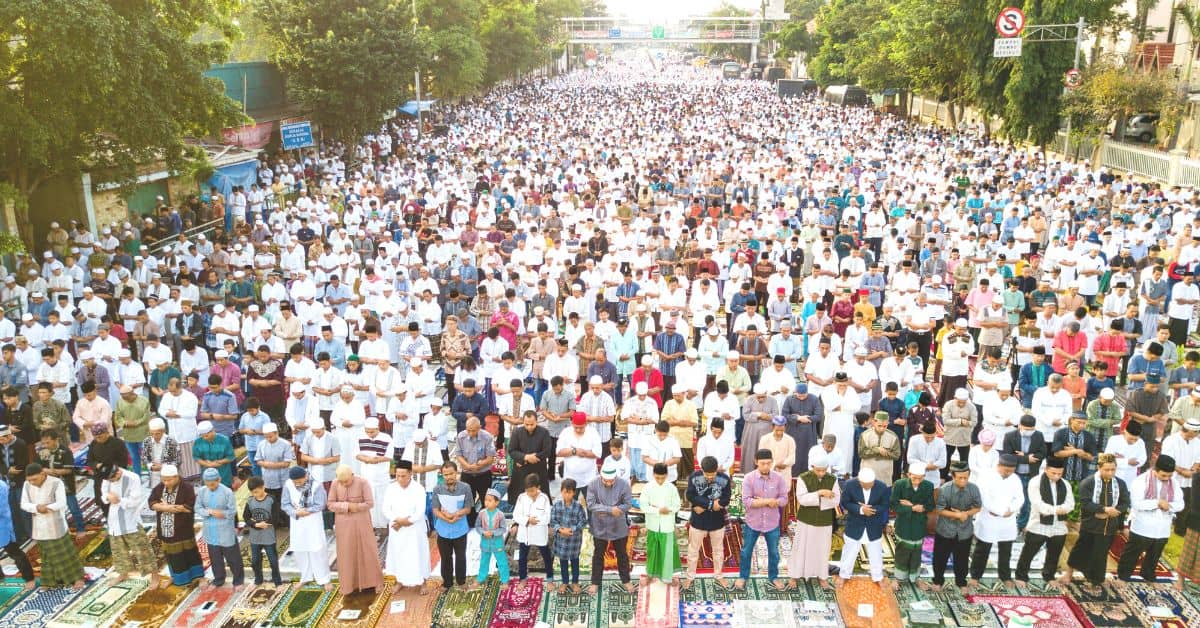Islam is a major global religion with a rich history and culture. It has over a billion followers worldwide, many of whom live in countries where most people are Muslim.
These Muslim majority countries are spread across different continents and climates, and their Islamic practices and traditions vary widely.
Muslim majority countries
What is a Muslim majority countries?
A Muslim-majority country is defined as a nation where more than half of its population identifies as followers of Islam. However, the degree of religious observance, cultural practices, and governance can vary widely among these countries. For instance, while nations like Saudi Arabia implement a strict interpretation of Islamic law, others, such as Turkey or Albania, maintain secular governments.
The presence of Islam in a country doesn’t necessarily dictate its governance or legal system. Many Muslim-majority countries have secular constitutions, while others intertwine religious principles with state affairs. This diversity is a testament to the multifaceted nature of the Islamic world, where faith intersects with local customs, traditions, and historical contexts.
List of Muslim majority countries
Here’s a comprehensive list of countries where the majority of the population identifies as Muslim:
- Afghanistan
- Albania
- Algeria
- Azerbaijan
- Bahrain
- Bangladesh
- Bosnia and Herzegovina (majority in some regions)
- Brunei
- Burkina Faso
- Chad
- Comoros
- Djibouti
- Egypt
- Gambia
- Guinea
- Guinea-Bissau
- Indonesia (the country with the largest Muslim population in the world)
- Iran
- Iraq
- Jordan
- Kazakhstan
- Kosovo
- Kuwait
- Kyrgyzstan
- Lebanon
- Libya
- Malaysia
- Maldives
- Mali
- Mauritania
- Morocco
- Niger
- Nigeria (majority in the northern regions)
- Oman
- Pakistan
- Palestine (West Bank and Gaza Strip)
- Qatar
- Saudi Arabia
- Senegal
- Sierra Leone
- Somalia
- Sudan
- Syria
- Tajikistan
- Tunisia
- Turkey
- Turkmenistan
- United Arab Emirates
- Uzbekistan
- Yemen
What is the significance of Muslim-majority countries?
The global presence of Islam is undeniable. From the bustling markets of Marrakech in Morocco to the serene beaches of the Maldives, the influence of Islam can be seen in art, architecture, cuisine, and daily life. Countries like Indonesia, which has the world’s largest Muslim population, play significant roles in international affairs, trade, and global culture.
The rich history of the Islamic Golden Age, spanning from the 8th to the 14th century, saw Muslim-majority regions lead in various fields such as science, mathematics, literature, and philosophy. This legacy continues today, with many Muslim-majority countries being centres of learning, innovation, and cultural exchange.
Which country is 100% Muslim in the world?
Maldives is considered to be a country that is 100% Muslim. The constitution of the Maldives designates Islam as the state religion and stipulates that all citizens must be Muslims. This makes the Maldives one of the few countries in the world with a 100% Muslim population.
The practice and understanding of Islam in the country are largely influenced by the Shafi’i school of Sunni Islam. The Islamic faith plays a significant role in shaping the country’s culture, traditions, and legal system. It’s worth noting that the Maldives has strict laws in place that restrict the practice of other religions.
What 5 countries are mostly Muslim?
These are the countries that are mostly Muslim:
- Indonesia
- Pakistan
- India
- Bangladesh
- Iran
Why is Islam the fastest growing religion in the world?
There are several factors contributing to Islam being the fastest growing religion in the world:
- High birth rates: Muslim families traditionally tend to have more children than those of other religious faiths. The high fertility rate is one of the major reasons for the rapid growth of the Muslim population.
- Conversion: While it is a common misconception that most of the growth is due to conversion, the reality is that conversions account for a very small part of the growth. Nevertheless, it does contribute to the overall growth.
- Younger demographic: The median age of Muslims is generally lower than that of non-Muslims, which means a greater proportion of Muslims are, or will soon be, at an age where they can have children, thus increasing the population further.
- Geographic spread: Islam is a major religion in areas of the world with high population growth, like Africa and parts of Asia. As these regions’ populations grow, so does the number of Muslims.
- Migration: Migration of Muslims to non-Muslim majority countries, especially in Europe and North America, also contributes to the growth of the religion.
- Tradition: Islam is a religion which strongly emphasizes tradition and community, leading to strong retention rates.
Please note that the extent to which each of these factors contributes to the growth of Islam can vary greatly from region to region.
Conclusion
Countries with a majority of Muslim people are important in the world. We need to understand these countries to encourage unity and respect. As the world becomes more connected, it’s important to understand the Islamic world for peace and progress.

